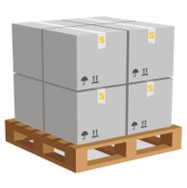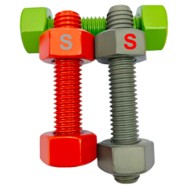
Understanding attire metrics occasionally presents itself as a cryptic conundrum
- Noting your individual frame starts the sizing journey
- Take precise chest, waist and hip readings for best results
- Study the supplier's measurement guide for precision
Avoid trusting tag numbers alone as they mislead often Better to use personal dimensions to consult the guide. Uncovering your look takes iterative personal trials.
Unlocking the logic of sizing grids
Inconsistent fit systems lead to common buying confusion. Converting measurement systems sometimes tests patience, as manufacturers use distinct scaling schemes. However, a little awareness and the right approach make fit simple.
- Start with understanding the metrics each label applies. Generally makers provide US, UK, European and regional Asian metrics.
- Following that, check bust, waist, hip and inseam entries carefully. Compare the brand's numbers to your body data.
- Finally, check the seller's tips and fit notes to refine your pick. You will usually find advice, alteration suggestions and guidance.
Zeroing in on your true fit when browsing
The arena of outfit sizing can be surprisingly baffling. Sized markers vary so a medium can match a different small. Divergence is rooted in each label's particular measurement scheme. Thus make a careful start by recording accurate personal measurements. Pick up a measuring band and determine bust, waist and hip figures. Steer away from using just your standard tagged size. A single brand's styles often affect how true a size runs. Uncovering the correct size can mean sampling several styles.

Choosing whether to use default sizes or bespoke fit
When sizing applies to items like furniture or fittings you must choose. Each option yields benefits but also constraints. Generic sizes supply ready availability and cost benefits. Custom sizing fits irregular spaces or specific functional demands
- Balance intended use and budget when making your pick
- Take precise measurements of the space or your shape
- Study vendors and product variants to find the best match
Ultimately the best size depends on your own situation.
Navigating cross-border sizing differences
Translating sizes between nations and brands sometimes bewilders. Happily, conversion resources can clarify the mapping between sets. Start out by mapping basic garment and shoe measurement standards. Use conversion charts to relate numbers across systems. Remember that figure and proportions affect how garments sit. Also check user feedback and fit comments for real-world clues.
Sizing decoded for everyday shoppers
Dealing with apparel charts commonly confuses people. Labels usually rely on individualized sizing methods, even so, simple tactics below will help you navigate sizing.
- Primary action: take accurate measurements with a fabric tape
- Next step: crosscheck your numbers against the chart
- Keep body shape in view since contours alter fit outcomes
In the end, trying items on gives the clearest sense of fit.
An extensive guide to both men's and women's fit ranges
E-commerce heightens the challenge of choosing the correct size. Accordingly, the following is a full guide to standard gendered sizes. In buying pants, shirts or dresses these tips clarify the right size.
- First tip: know that different brands and regions mean different sizes
- Thereafter, collect waist, hip, bust and torso stats carefully
- Ultimately, pick the higher size when caught between measures
Using the above rules helps you navigate size charts confidently. Hope you find the right fit easily!

Parents' resource for selecting children's sizes
Choosing a child's size can be surprisingly challenging. Rapid child growth causes frequent size changes. Look to the brand's chart rather than age as the sole guide. Take child's chest, waist and height readings accuratelyMastering body measurements: bust, waist and hips
Finding garments that suit you needs precise body figures. Use a pliable tape and friend for accurate circumference readings. Stay erect with shoulders relaxed and feet shoulder-width apart
Exploring what XS to XXL truly mean across brands
Today's garments use a patchwork of sizing rules and labels. Variation between makers reduces the chance of consistent fits. Taking a thorough look at size ranges clarifies the situation. Let's break down what each size label signifies in reality!
Promoting acceptance of all sizes

Acceptance of all sizes celebrates human variety and worth. It promotes rejecting constraints that label only one size desirable. We should nurture communities that support body confidence for all.
- Commit daily to encouraging body acceptance and love Opt for daily practices that reinforce Standard Size body love Adopt routines that strengthen body confidence and care Decide each day to celebrate body kindness and positive views
- Stay mindful that beauty resides in many different shapes
- Question the images and narratives that promote narrow ideals
- Choose body positivity and self-acceptance every day
